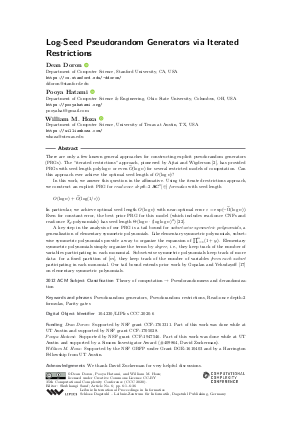LIPIcs.CCC.2020.6.pdf
- Filesize: 0.71 MB
- 36 pages

 Creative Commons Attribution 3.0 Unported license
Creative Commons Attribution 3.0 Unported license


















Feedback for Dagstuhl Publishing